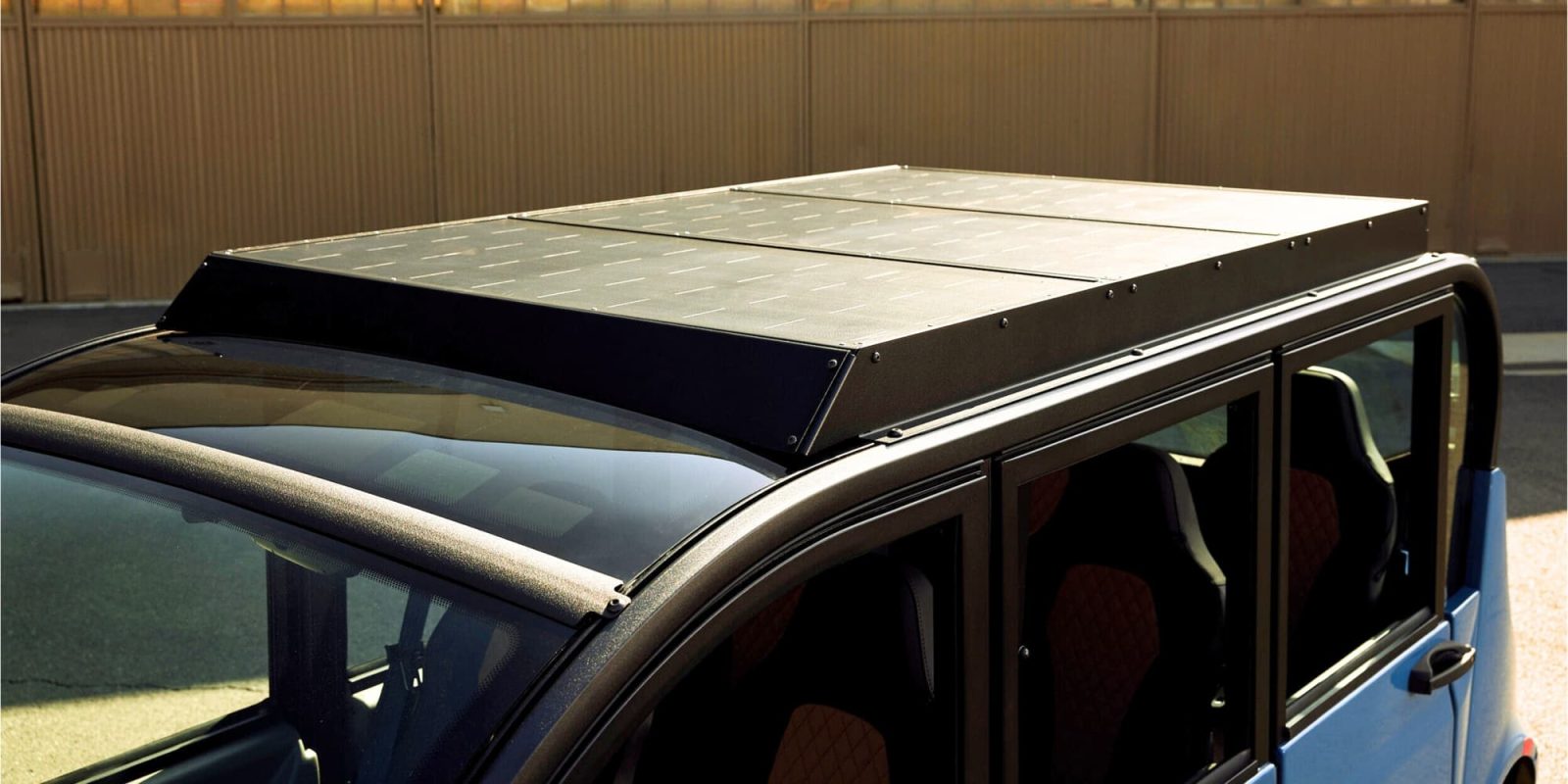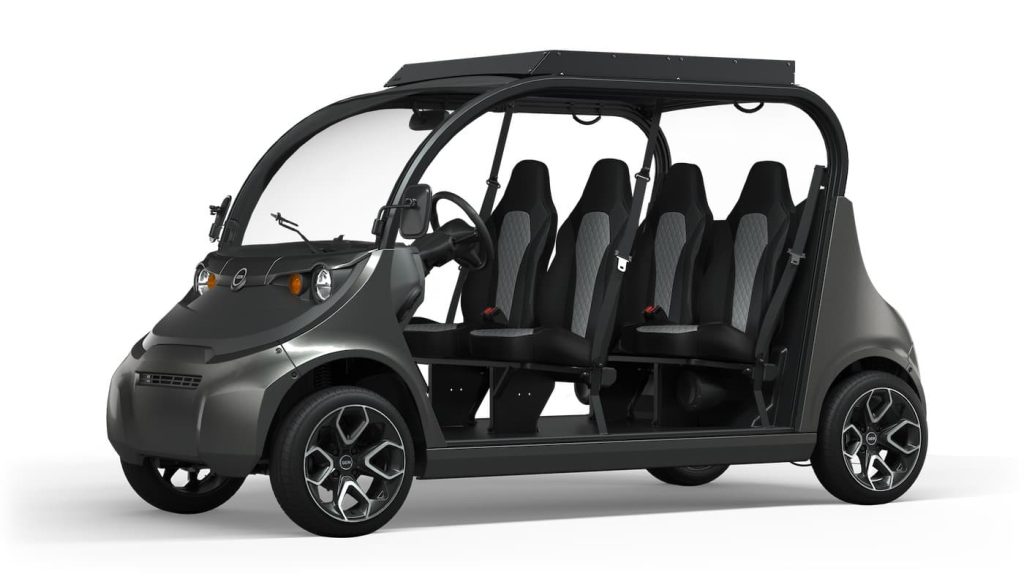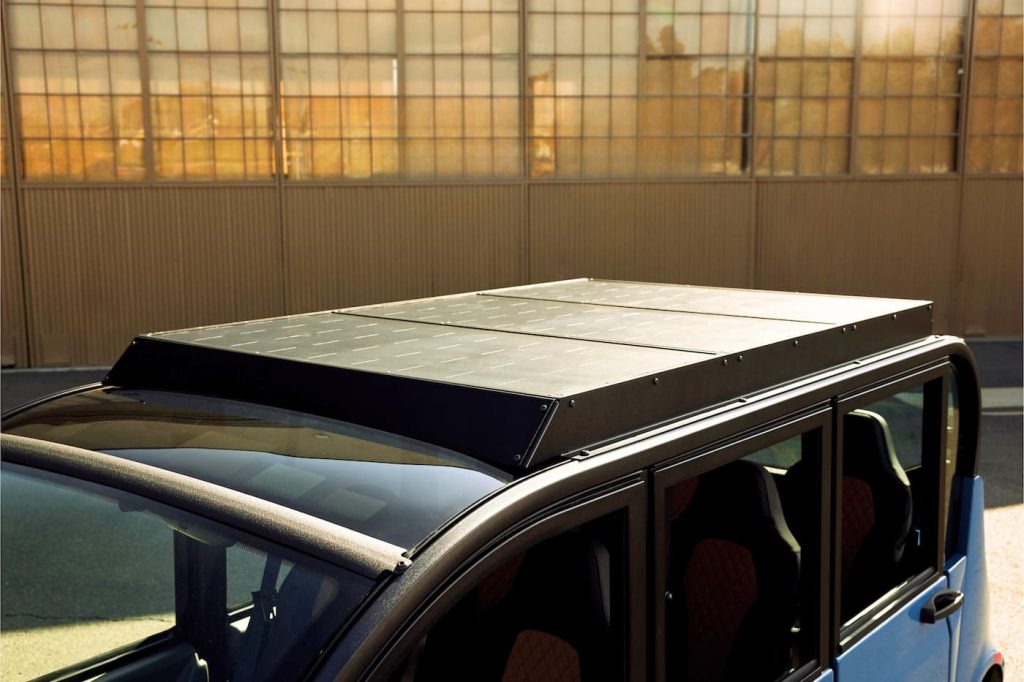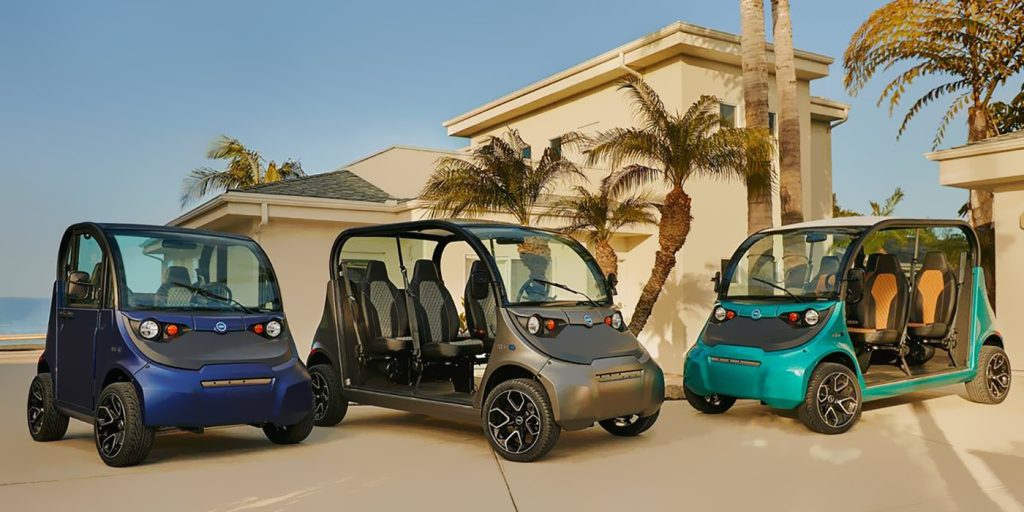
WAEV, the maker of the popular GEM neighborhood electric vehicle, has just announced a new solar panel option that turns the roof of its EVs into a convenient energy source.
GEM’s electric vehicles are one of the most popular Low Speed Vehicles in the US, a class of small and efficient vehicles designed to operate in urban areas and wherever larger full-size cars are unnecessary.
As all-electric vehicles, they are powered by EV batteries and generally require a connection to a wall outlet for recharging.
The new monocrystalline solar panel module announced today is an optional accessory that mounts to the vehicle’s roof and helps charge the GEM’s lead acid or lithium battery, depending on the model.
As WAEV engineering director Joe Kenney commented:
This Earth Month, we’re introducing a new solar panel option to power GEM electric vehicles with renewable energy. Sustainability has been at the core of GEM for more than 20 years and we’re dedicated to providing our customers – both individuals and businesses – with more sustainable ways to move.
The company hasn’t released exact specs on the power rating of the solar panel modules, but did share estimated range impacts for various models.
For example, depending on the model of GEM, WAEV expects the solar accessory to add between 4.3 to 12.4 miles (6.9 to 20 km) of range per day.

Solar panels on conventional electric cars rarely add this much range, largely due to the higher power motors used in full-size electric vehicles. With more powerful motors, the same amount of energy generated by modestly-sized solar panels simply can’t go as far.
But LSVs like the GEM have smaller motors that only propel them up to 25 mph (40 km/h). Because of this, they are much more efficient and thus can turn the same amount of solar-generator electricity into much longer driving range.
We’ve seen solar panels employed on other LSVs like the Mark 2 Solar from Wink Motors, which we tested out last month in New York City.
These types of solar-powered LSVs generally don’t receive their entire charge from the sun, but rather use a solar panel as a form of range extender. The vehicles can still be plugged into conventional electrical outlets for a primary charge.

Low Speed Vehicles, often referred to as Neighborhood Electric Vehicles (NEVs) or microcars, offer a host of benefits that contribute to a more sustainable and convenient mode of transportation within local communities.
As eco-friendly alternatives to conventional gasoline-powered vehicles, NEVs produce zero emissions, helping to reduce air pollution and promote cleaner air quality.
Their compact size and low-speed operation make them ideal for navigating tight spaces and crowded streets, which also helps to create a safer environment for pedestrians and cyclists sharing the road.
In addition to their environmental advantages, NEVs boast lower operating and maintenance costs, resulting in significant savings for owners. Their quiet operation also helps to reduce noise pollution.
While still few in number in the US, NEVs are a growing segment of the transportation industry. Advances like roof-mounted solar panels for these efficient electric vehicles may help spur increased adoption by reducing the frequency of charge stops.

FTC: We use income earning auto affiliate links. More.





Comments